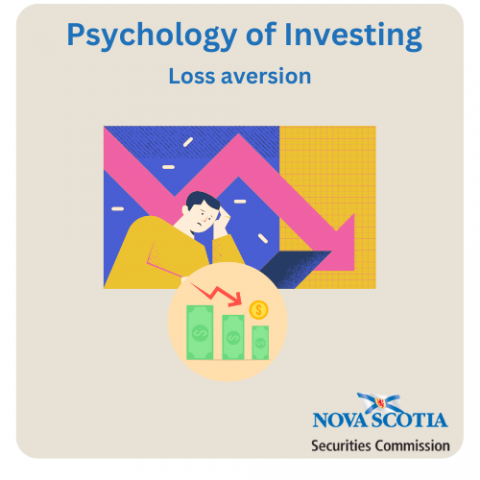Submitted by nsscadmin on

The fourth part of our psychology of investing series takes a closer look at loss aversion. Have you ever held onto an investment longer than you should because you were afraid of taking a loss? This may have been due to loss aversion.
Many people will go to great lengths to avoid a loss. This could be investment losses, or simply losses in a game. According to studies, the psychological pain of losing something can be twice as powerful as the pleasure of gaining it. This can often be the case in investing where a person will feel twice as bad when they lose $100 compared to how good they feel when they gain $100.
The levels of pain felt during loss aversion can often vary depending on the severity of the stakes. If your favorite sports team loses you may feel bad, but it may pale in comparison to how you feel if you lose money from an investment.
The most common way loss aversion effects investors is by causing them to hold losing investments much longer than they should according to the data and the research. Maybe the stock you bought for $50 a share has dropped to $35 a share and all the data and information present is telling you that further loss is expected, and you should sell to cut your losses. Loss aversion may cause you to ignore the data and hold the investment longer in hopes the stock price will recover and you will avoid taking a loss.
People susceptible to loss aversion will also often avoid taking on heightened risk due to the fact that it can lead to higher losses. They focus more on the potential for greater losses than the potential for greater gains. This may protect them at times, but it can also cause them to miss out on higher returns in the future.
If loss aversion has caused you to make poor investment decisions in the past or if you believe you are susceptible to loss aversion here are a few ways to protect yourself when investing.
Automate your investments – Saved money loses value over time due to inflation. Because of this some people will avoid saving due to loss aversion. If this applies to you then automating your saving may help. Take the thought process out of saving by having some money automatically added to your savings or investment accounts regularly.
Reframe your thoughts – Some investors see market declines as an opportunity to buy at a greater value. This is a common theme for index investors for example. They are investing for the long-term and expect the index they are investing in to gain value over several years. A short-term decline may allow them to buy more of the asset possibly setting them up for larger future gains.
Listen to the data or an expert – If you’re a DIY investor or working with a registered adviser use the information presented to you to make your investment decisions. Rational thought over emotional thought or instinct will help you avoid falling into traps set by loss aversion.
Our series on the psychology of investing continues in two weeks with Part 5 which looks at anchoring.
